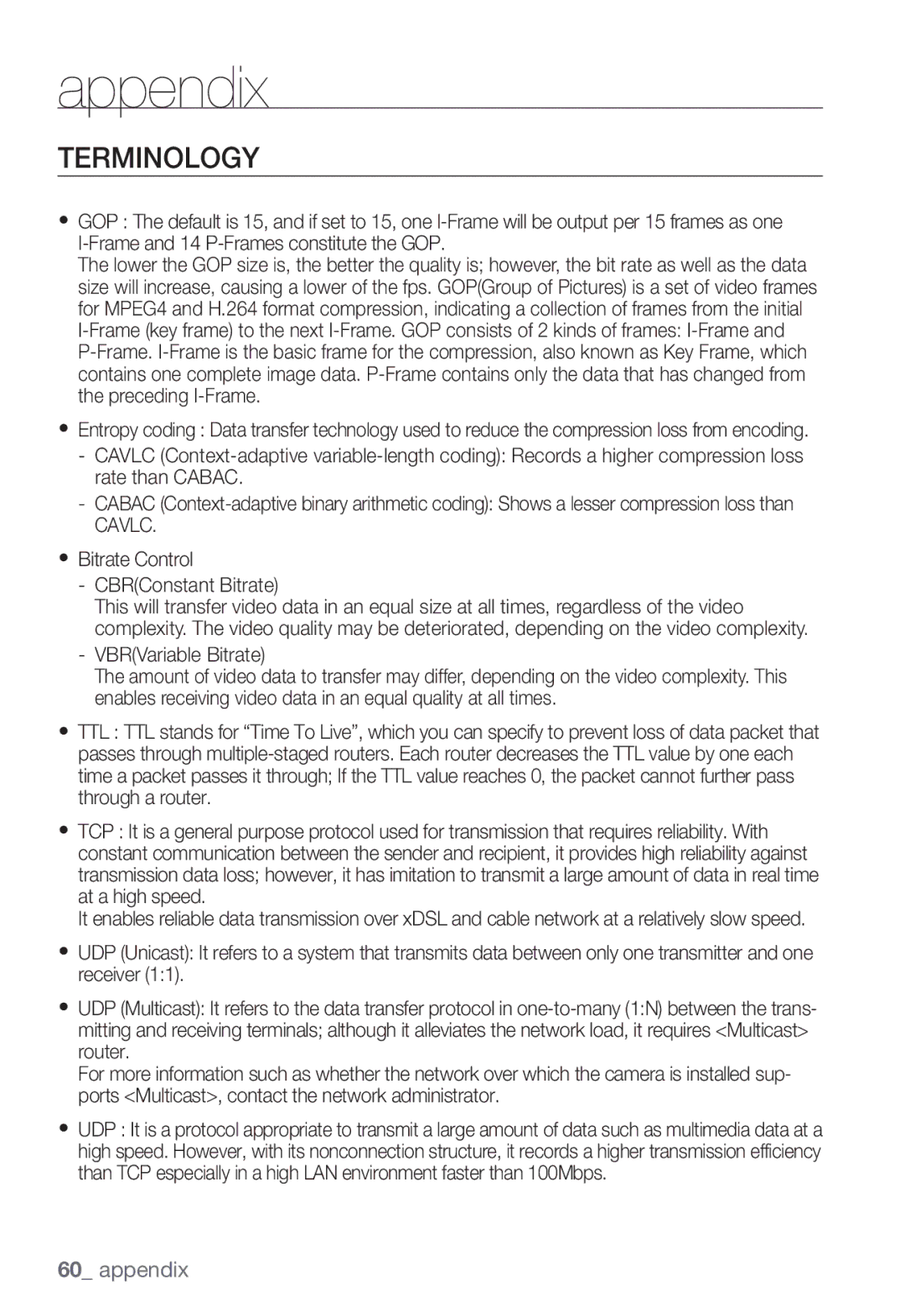appendix
TERMINOLOGY
yGOP : The default is 15, and if set to 15, one
The lower the GOP size is, the better the quality is; however, the bit rate as well as the data size will increase, causing a lower of the fps. GOP(Group of Pictures) is a set of video frames for MPEG4 and H.264 format compression, indicating a collection of frames from the initial
yEntropy coding : Data transfer technology used to reduce the compression loss from encoding.
-CAVLC
-CABAC
CAVLC.
yBitrate Control
-CBR(Constant Bitrate)
This will transfer video data in an equal size at all times, regardless of the video complexity. The video quality may be deteriorated, depending on the video complexity.
-VBR(Variable Bitrate)
The amount of video data to transfer may differ, depending on the video complexity. This enables receiving video data in an equal quality at all times.
yTTL : TTL stands for “Time To Live”, which you can specify to prevent loss of data packet that passes through
yTCP : It is a general purpose protocol used for transmission that requires reliability. With constant communication between the sender and recipient, it provides high reliability against transmission data loss; however, it has imitation to transmit a large amount of data in real time at a high speed.
It enables reliable data transmission over xDSL and cable network at a relatively slow speed.
yUDP (Unicast): It refers to a system that transmits data between only one transmitter and one receiver (1:1).
yUDP (Multicast): It refers to the data transfer protocol in
For more information such as whether the network over which the camera is installed sup- ports <Multicast>, contact the network administrator.
yUDP : It is a protocol appropriate to transmit a large amount of data such as multimedia data at a high speed. However, with its nonconnection structure, it records a higher transmission efficiency than TCP especially in a high LAN environment faster than 100Mbps.
60_ appendix
